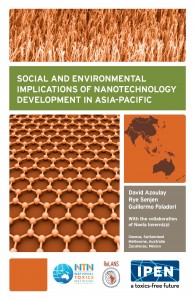
All around the world, nanotechnology is being promoted as a technological revolution that will help solve an array of problems. According to the current hype, nanotechnology promises to provide new ways of solving some of the Asia-Pacific Region’s chronic challenges, such as treating tuberculosis and malaria, making water drinkable, conserving food, and diversifying energy sources, among other hosts of applications. However, the potential risks and social implications of this new technology are not often discussed or addressed. The overall level of awareness and capacity to address these issues remains very low, in both civil society and government, and prevents these actors from playing their social role in ensuring the public good.
Research on nanotechnology and increased commercialization of products containing engineered nanomaterials (generally called nanoproducts), is currently happening in the Asia-Pacific Region (e.g., Thailand, China, India, Korea, Japan, Australia, and many other countries). In several countries in the region, nanotechnology has been declared a strategic sector of scientific and technological development. To achieve the strategic goals, public funds have been or are being used to encourage nanotechnology development through the establishment of research networks and research centres. While many countries in the Asia-Pacific Region have established national nanotechnology initiatives, actual investments in this area vary greatly from country to country. Japan, China, and South Korea have all heavily invested in nanotechnology research and development, with, for instance, China spending USD$ 1.3 billion in 2011.
Even though potential health and environmental risks of engineered nanomaterials are scientifically documented and numerous uncertainties remain, the public funds dedicated to evaluating these risks are extremely low. As a consequence, the current policies in regard to this technology are far from precautionary as the products enter the market unregulated and unlabeled, neither guaranteeing the safety of the product nor the provision of information to the consumer.
In this context, this informational brochure has been developed to (i) provide an overview of nanotechnology development in the Asia-Pacific Region; (ii) introduce the social, environmental, and health implications of nanotechnology for workers and consumers in this region; and (iii) to stimulate and strengthen stakeholders’ participation in the global and national discussions on the actions to be implemented by governments, industry, and civil society to lay out a precautionary environment for the safe development of this technology.
